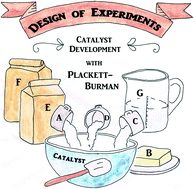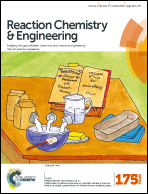Methanation of residual syngas after LPG synthesis: identifying the main effects on catalytic performance with Plackett–Burman screening design†
Abstract
Methanation of residual syngas as a downstream process after liquefied petroleum gas (LPG) synthesis is considered to be an attractive alternative to conventional gas separation. Seven intensively studied factors in catalyst development (ratio of Fe/Ni, metal loading, selection of Al2O3 or SiO2 as oxidic support, addition of promoters such as potassium and/or MgO, heat dissipation by diluting with inert material and two common preparation techniques (impregnation and precipitation)) were selected within a Plackett–Burman screening design and rated towards their impact on catalytic performance such as carbon monoxide and hydrocarbon conversion as well as methane and carbon dioxide selectivity. Detailed characterization of fresh and used catalysts has been carried out applying N2-physisorption, X-ray diffraction (XRD), inductively coupled plasma atomic emission spectroscopy (ICP-AES), temperature-programmed reduction (H2-TPR), and transmission electron microscopy with energy-dispersive spectroscopy (TEM/EDS) in order to confirm the results. Finally, suggestions on the preferred levels of these factors are made for development of advanced catalysts.


 Please wait while we load your content...
Please wait while we load your content...